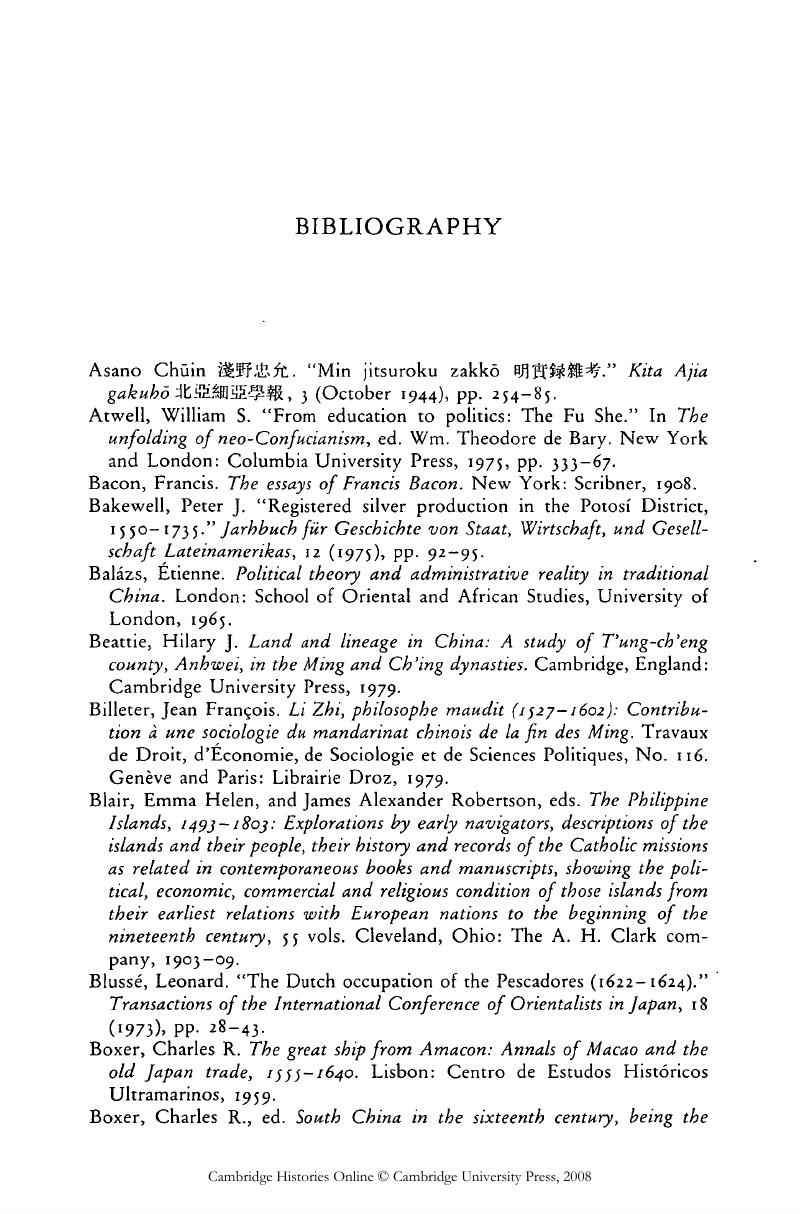Book contents
- Frontmatter
- Introduction
- 1 The rise of the Ming dynasty, 1330–1367
- 2 Military Origins of Ming China
- 3 The Hung-wu reign, 1368–1398
- 4 The Chien-wen, Yung-lo, Hung-hsi, and Hsüan-te reigns, 1399–1435
- 5 The Cheng-t'ung, Ching-t'ai, and T'len-shun reigns, 1436–1464
- 6 The Ch'eng-hua and Hung-chih reigns, 1465–1505
- 7 The Cheng-te reign, 1506–1521
- 8 The Chia-ching reign, 1522–1566
- 9 The Lung-ch'ing and Wan-li reigns, 1567–1620
- 10 The T'ai-ch'ang, T'ien-ch'i, and Ch'ung-chen reigns, 1620–1644
- 11 The Southern Ming, 1644–1662
- 12 Historical writing during the Ming
- Bibliographic notes
- Bibliography
- Glossary-index
- References
Bibliography
Published online by Cambridge University Press: 28 March 2008
- Frontmatter
- Introduction
- 1 The rise of the Ming dynasty, 1330–1367
- 2 Military Origins of Ming China
- 3 The Hung-wu reign, 1368–1398
- 4 The Chien-wen, Yung-lo, Hung-hsi, and Hsüan-te reigns, 1399–1435
- 5 The Cheng-t'ung, Ching-t'ai, and T'len-shun reigns, 1436–1464
- 6 The Ch'eng-hua and Hung-chih reigns, 1465–1505
- 7 The Cheng-te reign, 1506–1521
- 8 The Chia-ching reign, 1522–1566
- 9 The Lung-ch'ing and Wan-li reigns, 1567–1620
- 10 The T'ai-ch'ang, T'ien-ch'i, and Ch'ung-chen reigns, 1620–1644
- 11 The Southern Ming, 1644–1662
- 12 Historical writing during the Ming
- Bibliographic notes
- Bibliography
- Glossary-index
- References
Summary

- Type
- Chapter
- Information
- The Cambridge History of China , pp. 816 - 859Publisher: Cambridge University PressPrint publication year: 1988



